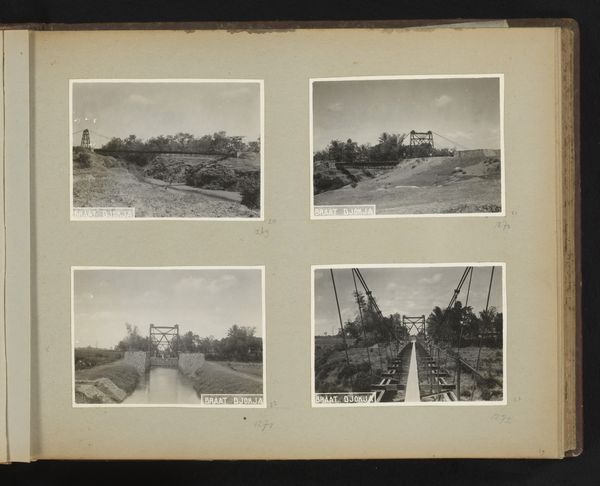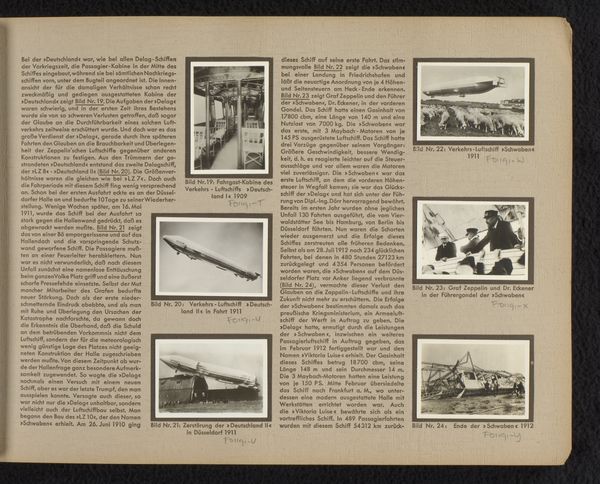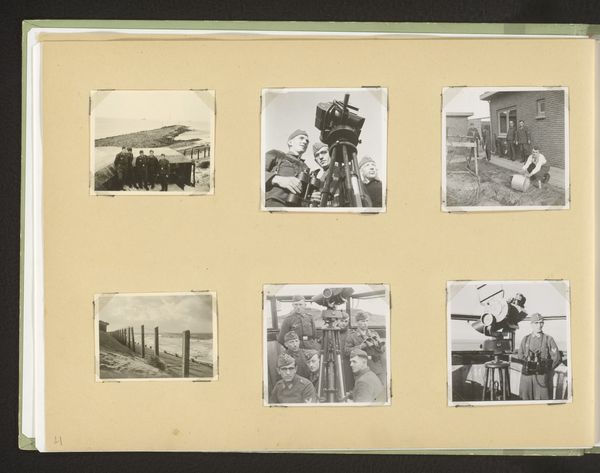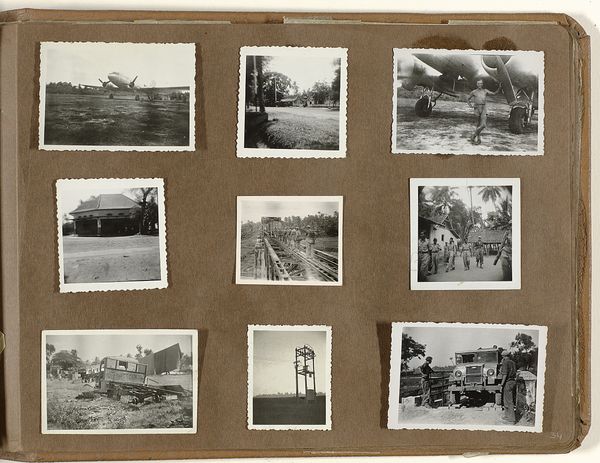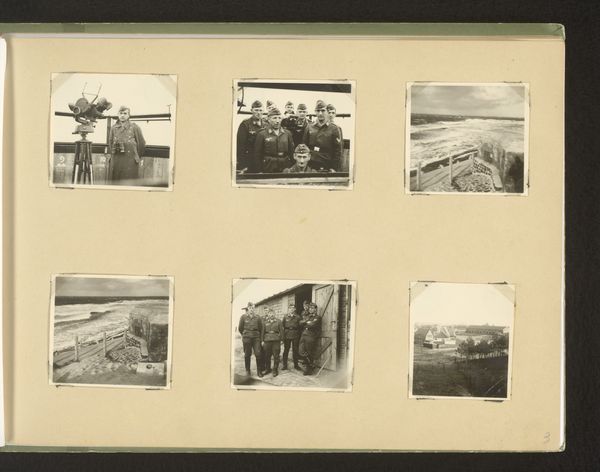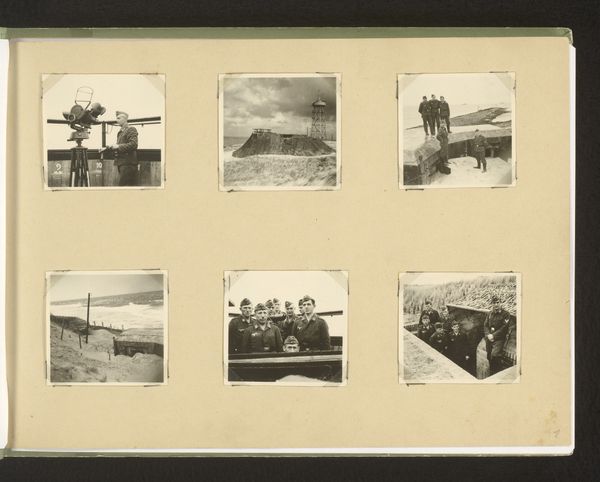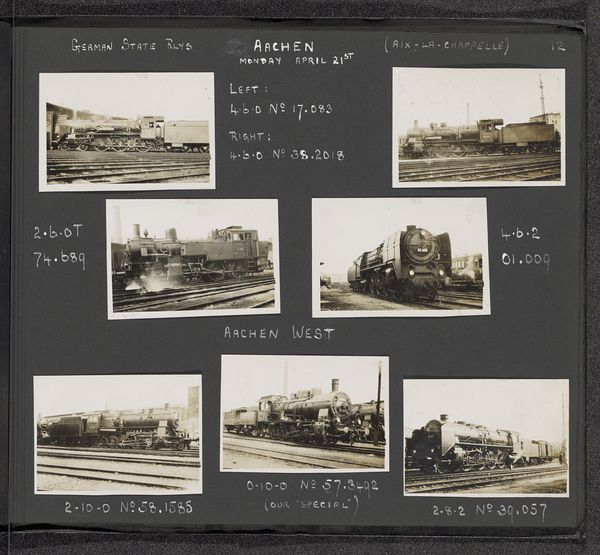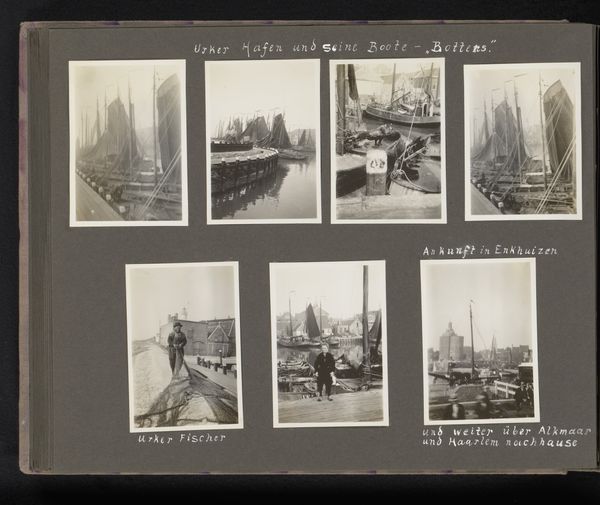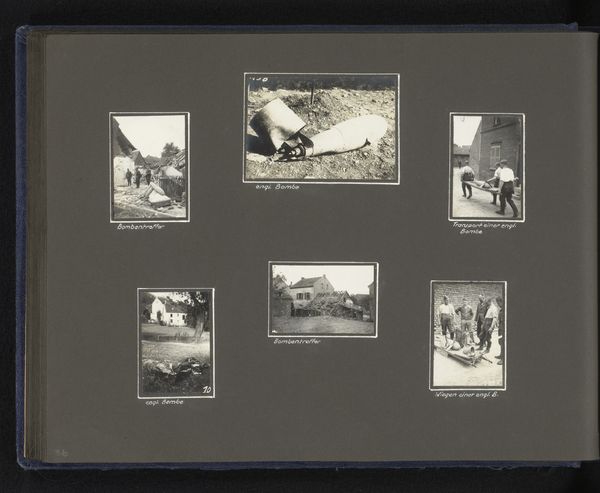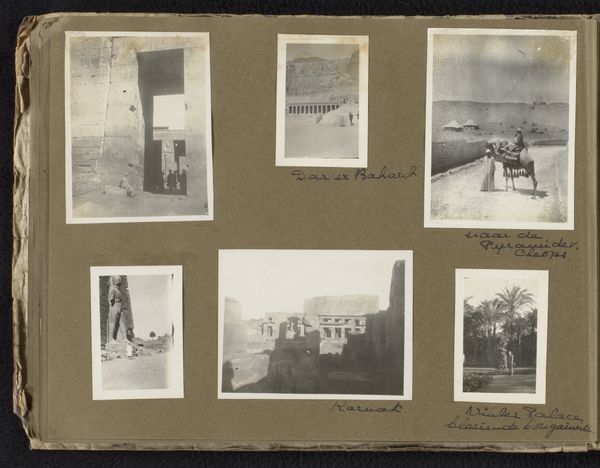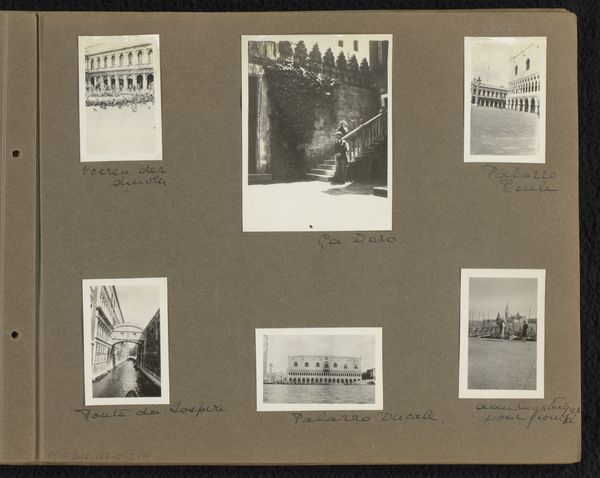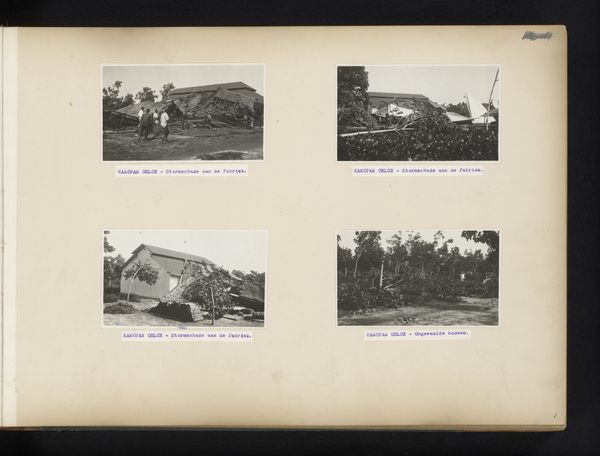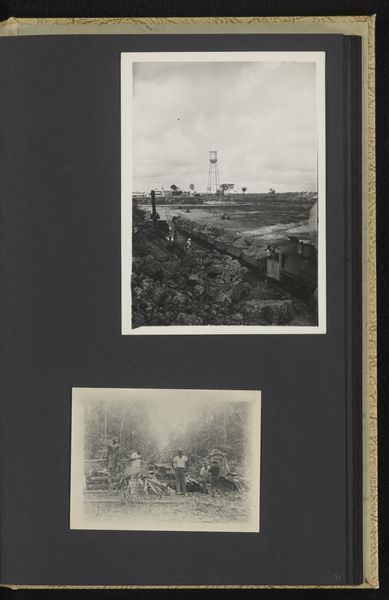
Verbouwingen op Brussel, Pernantian en Padang Halaban, 1939-1940 Possibly 1939 - 1941
0:00
0:00
print, photography
# print
#
landscape
#
photography
#
modernism
#
realism
Dimensions: height 92 mm, width 125 mm, height 335 mm, width 475 mm
Copyright: Rijks Museum: Open Domain
Curator: This image is a page from a photo album with the title “Verbouwingen op Brussel, Pernantian en Padang Halaban, 1939-1940,” likely created between 1939 and 1941. It showcases different scenes of construction, primarily infrastructure projects, in various locations. What's your first take? Editor: It strikes me as incredibly methodical. The neat arrangement of the photos, the stark contrasts of light and shadow—it all gives off a feeling of detached observation, almost scientific. Curator: Indeed. The visual language, rendered in monochrome, really reinforces the documentary intention here. You see bridges, drainage pipes, what seems to be new rail infrastructure. The repetition hints at a deeper narrative about colonial modernization and resource extraction. Editor: Absolutely. The structures, the straight lines of the new constructions against the more fluid and overgrown jungle setting, tell a potent story. Is it just me, or does that cylindrical object seem very out of place among these structures? Curator: That's likely a section of a large concrete drainage pipe being installed. It symbolizes the attempt to control and reshape the landscape, redirecting the flow of nature for human needs and industry. Look at how the frame of each photograph contains a piece of grand scheme or single component thereof. Editor: And it's compelling how each photograph is titled beneath the image, but not with flowery terms – quite matter of fact, stating something simple like "New Railroad Bridge". In each photo, humanity seems to dominate what I assume would otherwise be flourishing. I’m curious, were these photos ever presented publicly? Curator: Not that we know. The page and surrounding photos appear to have been kept by the photographer. Consider how such infrastructure projects reshape the cultural landscape. What traces of past memories and Indigenous structures were lost to make way for progress, do you think? Editor: I appreciate how you brought us full circle. Thinking about the past and its transformation via human development helps me really grasp what the photographer was aiming for. I'm grateful I could experience these photos today. Curator: Me too. By focusing on these individual components and recognizing how the photographs were organized, it offers insights beyond the mere surface of construction.
Comments
No comments
Be the first to comment and join the conversation on the ultimate creative platform.
